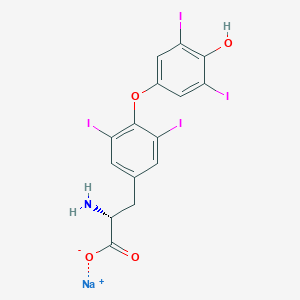-
Categories
-
Pharmaceutical Intermediates
-
Active Pharmaceutical Ingredients
-
Food Additives
- Industrial Coatings
- Agrochemicals
- Dyes and Pigments
- Surfactant
- Flavors and Fragrances
- Chemical Reagents
- Catalyst and Auxiliary
- Natural Products
- Inorganic Chemistry
-
Organic Chemistry
-
Biochemical Engineering
- Analytical Chemistry
- Cosmetic Ingredient
-
Pharmaceutical Intermediates
Promotion
ECHEMI Mall
Wholesale
Weekly Price
Exhibition
News
-
Trade Service
in the fourth quarter of 2022 and early 2023, although the poultry industry still faces great challenges, as well as in North America.
From a market perspective, the combination of a weak economic environment and insufficient purchasing power of consumption has led to more price-driven purchasing behavior
.
Considering that chicken is the most cost-effective source of meat protein, this will boost poultry consumption
.
Market performance is also related
to the dependence of the local economy on energy trade.
Overall, South and Southeast Asia, the Middle East, and Africa tend to outperform Europe, Northeast Asia, and South America
.
The risk of the pandemic remains and could still affect the northern hemisphere winter poultry industry and, indirectly, international trade
.
to the dependence of the local economy on energy trade.
Overall, South and Southeast Asia, the Middle East, and Africa tend to outperform Europe, Northeast Asia, and South America
.
The risk of the pandemic remains and could still affect the northern hemisphere winter poultry industry and, indirectly, international trade
.
The biggest challenges in the poultry market today are persistently high feed prices, rising energy prices in import-dependent countries, high distribution costs, rising labour prices, and the ongoing impact
of avian influenza (AI).
Rabobank forecasts that feed prices will be 10%-15% below their Q2 peak for the remainder of 2022 and early 2023, in line with
Q1 levels.
of avian influenza (AI).
Rabobank forecasts that feed prices will be 10%-15% below their Q2 peak for the remainder of 2022 and early 2023, in line with
Q1 levels.
Chicken prices were supported by higher cost prices
of other major inputs.
This phenomenon is particularly pronounced in Europe, where energy prices will soar to more than
ten times the average in the coming winter.
As costs continue to increase, agriculture and processing industries will be affected to varying degrees, affecting the production of CO2 required for slaughter, while increasing the cost of cold storage and distribution.
of other major inputs.
This phenomenon is particularly pronounced in Europe, where energy prices will soar to more than
ten times the average in the coming winter.
As costs continue to increase, agriculture and processing industries will be affected to varying degrees, affecting the production of CO2 required for slaughter, while increasing the cost of cold storage and distribution.
Avian influenza continues to spread globally, with cases
occurring in the northern hemisphere summer, as well as in South-East Asia and Africa.
The continued risk of avian influenza transmission and the difficult trade in breeding poultry and products have led to continued supply constraints
in many regions.
occurring in the northern hemisphere summer, as well as in South-East Asia and Africa.
The continued risk of avian influenza transmission and the difficult trade in breeding poultry and products have led to continued supply constraints
in many regions.
Tight global supplies and rising prices have already led to a record 3.
5 million mt of trade in the second quarter of 2022, while trade is expected to reach new highs
in the second half of 2022.
More countries are stabilizing domestic prices
by opening import markets.
5 million mt of trade in the second quarter of 2022, while trade is expected to reach new highs
in the second half of 2022.
More countries are stabilizing domestic prices
by opening import markets.
Against a challenging backdrop in the global market, maintaining a balanced production balance is crucial
.
The continued increase in chicken supply in South America and Mexico indicates the risk of
market imbalance amid past cost increases.
Brazil is a case in point
.
.
The continued increase in chicken supply in South America and Mexico indicates the risk of
market imbalance amid past cost increases.
Brazil is a case in point
.
The focus of the global poultry industry should be on industrial production efficiency
.
When affected by inflation, supply challenges and supply disruptions, efficiency determines the performance of the industry
.
It is even more important to provide affordable enough solutions to put chicken on the menus
of consumers with insufficient purchasing power.
.
When affected by inflation, supply challenges and supply disruptions, efficiency determines the performance of the industry
.
It is even more important to provide affordable enough solutions to put chicken on the menus
of consumers with insufficient purchasing power.
According to the latest EU Poultry Short-Term Outlook report, EU poultry production is expected to decline
in 2022, based on market expert opinion from the European Commission's Ministry of Agriculture and Rural Development.
in 2022, based on market expert opinion from the European Commission's Ministry of Agriculture and Rural Development.
The normal operation of the EU poultry industry is due to the price advantage of poultry meat, especially during the period of high inflation in the EU and the relaxation of control measures related to the new crown epidemic, which effectively guarantees the demand
for poultry meat in the catering industry.
Despite the positive demand, the main producers of the EU (Poland, Spain and Germany) are expected to grow modestly (4.
6% y-o-y in January-June 2022)
due to higher input cost prices.
for poultry meat in the catering industry.
Despite the positive demand, the main producers of the EU (Poland, Spain and Germany) are expected to grow modestly (4.
6% y-o-y in January-June 2022)
due to higher input cost prices.
According to the latest data from EFSA, the European Centre for Disease Prevention and Control and the EU Reference Laboratory, unprecedented cases
of highly pathogenic avian influenza (HPAI) were reported in wild birds and poultry in Europe from June to September.
In previous years, no or only a few cases were detected during the summer months
.
The entire HPAI season of 2021-2022 produced the largest epidemic
ever detected in Europe.
Between 11 June and 9 September 2022, 788 cases of HPAI virus were reported in 16 EU/EEA countries and the United Kingdom, including 56 in poultry, 22 in captivity and 710 in wild birds
.
Wild bird infections have occurred throughout the summer in 15 European countries, notably Germany, France, the Netherlands and the United Kingdom
.
Severely infected wild birds also pose a constant risk
of infection to poultry.
From June to September, the number of poultry cases decreased compared to previous months, but was more than five times higher than
in the same period last year.
The ongoing highly pathogenic avian influenza season has produced the largest epidemic in Europe to date, with 2,467 poultry outbreaks and 47.
7 million birds culled
.
In the fall of 2021, the HPAIA (H5N1) virus also crossed the Atlantic for the first time, spreading along a migration route from Europe to North America, causing severe poultry epidemics in several Canadian provinces
and the United States.
of highly pathogenic avian influenza (HPAI) were reported in wild birds and poultry in Europe from June to September.
In previous years, no or only a few cases were detected during the summer months
.
The entire HPAI season of 2021-2022 produced the largest epidemic
ever detected in Europe.
Between 11 June and 9 September 2022, 788 cases of HPAI virus were reported in 16 EU/EEA countries and the United Kingdom, including 56 in poultry, 22 in captivity and 710 in wild birds
.
Wild bird infections have occurred throughout the summer in 15 European countries, notably Germany, France, the Netherlands and the United Kingdom
.
Severely infected wild birds also pose a constant risk
of infection to poultry.
From June to September, the number of poultry cases decreased compared to previous months, but was more than five times higher than
in the same period last year.
The ongoing highly pathogenic avian influenza season has produced the largest epidemic in Europe to date, with 2,467 poultry outbreaks and 47.
7 million birds culled
.
In the fall of 2021, the HPAIA (H5N1) virus also crossed the Atlantic for the first time, spreading along a migration route from Europe to North America, causing severe poultry epidemics in several Canadian provinces
and the United States.
The poultry industry relies heavily on corn as its feed source
.
Corn production in 2022 is not good, but a large amount of corn
can still be imported from Ukraine.
.
Corn production in 2022 is not good, but a large amount of corn
can still be imported from Ukraine.
Overall, EU poultry production will decline slightly by 0.
9% in 2022 and 0.
4%
in 2023.
EU poultry consumption is expected to increase slightly by 1.
1% in 2022, remaining stable at
23.
4 kg per capita.
EU poultry consumption is expected to remain stable in 2023, averaging 23.
3 kg
per capita.
9% in 2022 and 0.
4%
in 2023.
EU poultry consumption is expected to increase slightly by 1.
1% in 2022, remaining stable at
23.
4 kg per capita.
EU poultry consumption is expected to remain stable in 2023, averaging 23.
3 kg
per capita.







